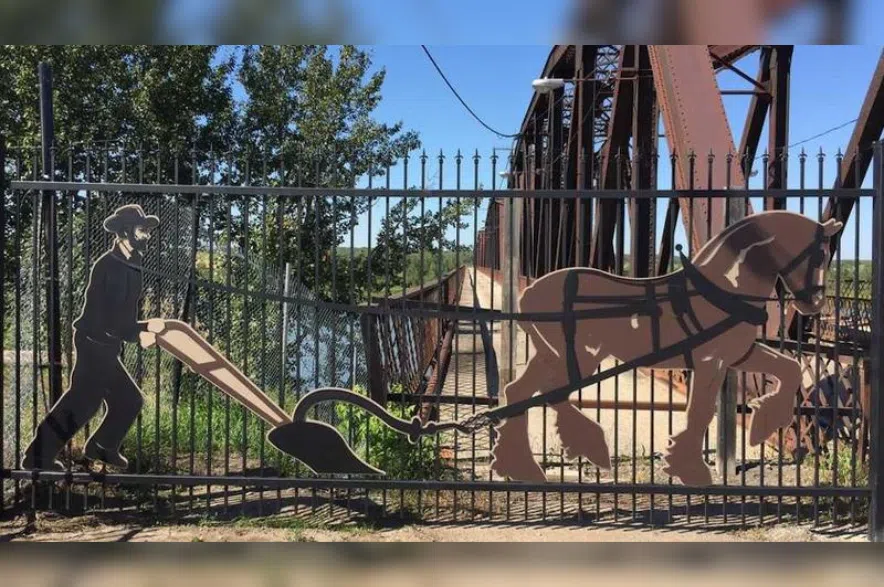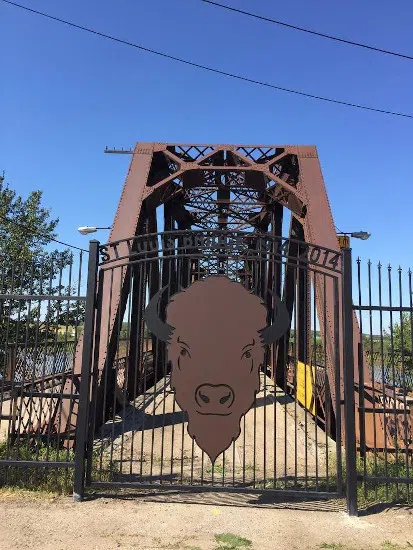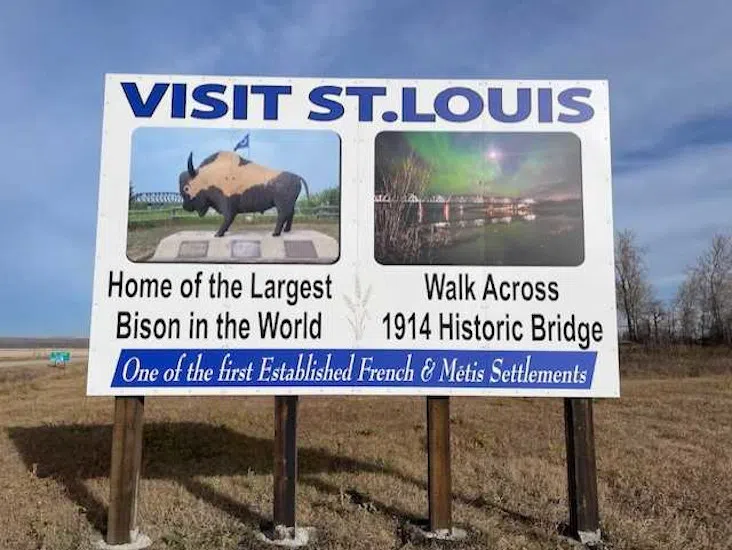By Nigel Maxwell
Referring to a plan and work that began seven years ago, Michel Dubé said that a group of volunteers has been able to demonstrate what they can do with a lot of time and patience on their hands.
The St. Louis Historical Society (SLHS) announced that its Historical Bridge Transformation Project is now complete.
Read more:
- What you need to know about new legislation that could expand First Nations status
- Agribition kicks off in Regina with full barns, free admission and new features
- Heavy snow heading for southwest Saskatchewan: Environment Canada
Dubé, who is a volunteer with the society, acknowledged it had to jump through several hoops and overcome many challenges along the way.
“There’s a feeling of encouragement and there’s a feeling of pride, I believe that we were able to get through the process without ruffling anybody’s feathers or causing any major problems for anybody,” he said.
The historic bridge, originally built in 1914 to accommodate rail traffic and later automobiles north to Prince Albert, was closed by the Ministry of Highways in 2014 and deemed unsafe for any form of traffic, including pedestrians. It was replaced by a new structure further along the South Saskatchewan River.
There was a great deal of concern expressed about the local economic impact and Dubé confirmed that it was considered when they started this project.
“Hopefully it will create some spinoff business for the other local businesses,” he said, adding there could be the potential for some other partnerships and cross-promotion with other local attractions, like the giant bison, Lions Park and events like Back to Batoche.
The restoration project was made possible with $180,000 in contributions.
The tourist attraction features an artistic wrought iron pedestrian entrance and walkway—designed by the Fransaskois artist, Constant Poilièvre—bilingual interpretive signs, benches overlooking the South Saskatchewan River and a full nighttime lighting system.
The St. Louis Historical Society erected a full-size road sign to attract vehicle traffic to historical St. Louis.
For Dubé, seeing the bridge preserved was deeply personal.
“My family’s roots come from that area, so there’s always a bit of that sentimental attachment to the bridge and to the project and I think you know that’s gonna kind of energize us a little bit to maybe try to attempt to get to one or two more stages in the project,” he said.
Looking ahead to next summer, Dubé hopes to have a formal community gathering on the bridge and share some food and music on the pedestrian portion of the bridge.
The Village of St. Louis is located roughly 30 kilometres south of Prince Albert off Highway 2.













